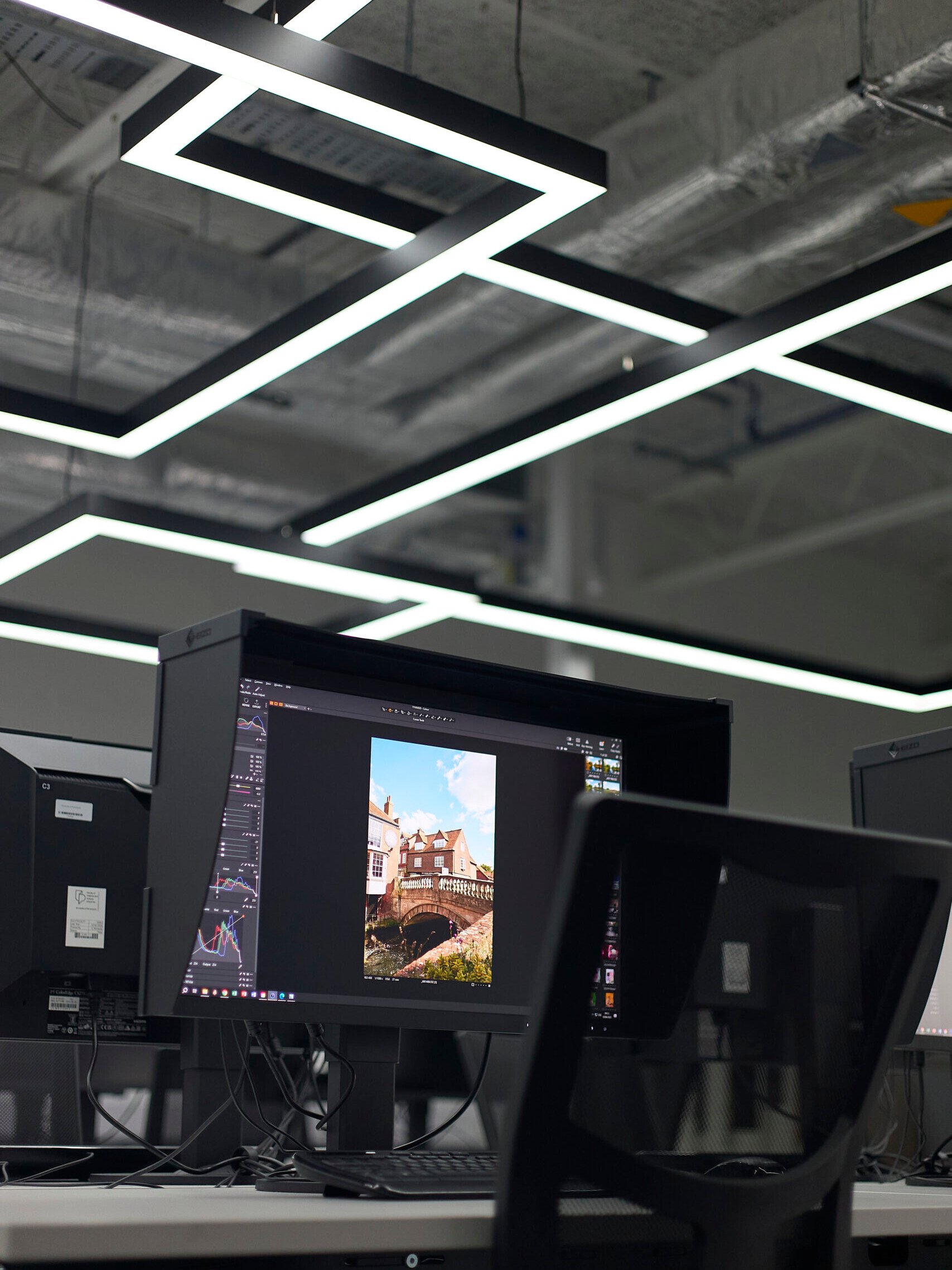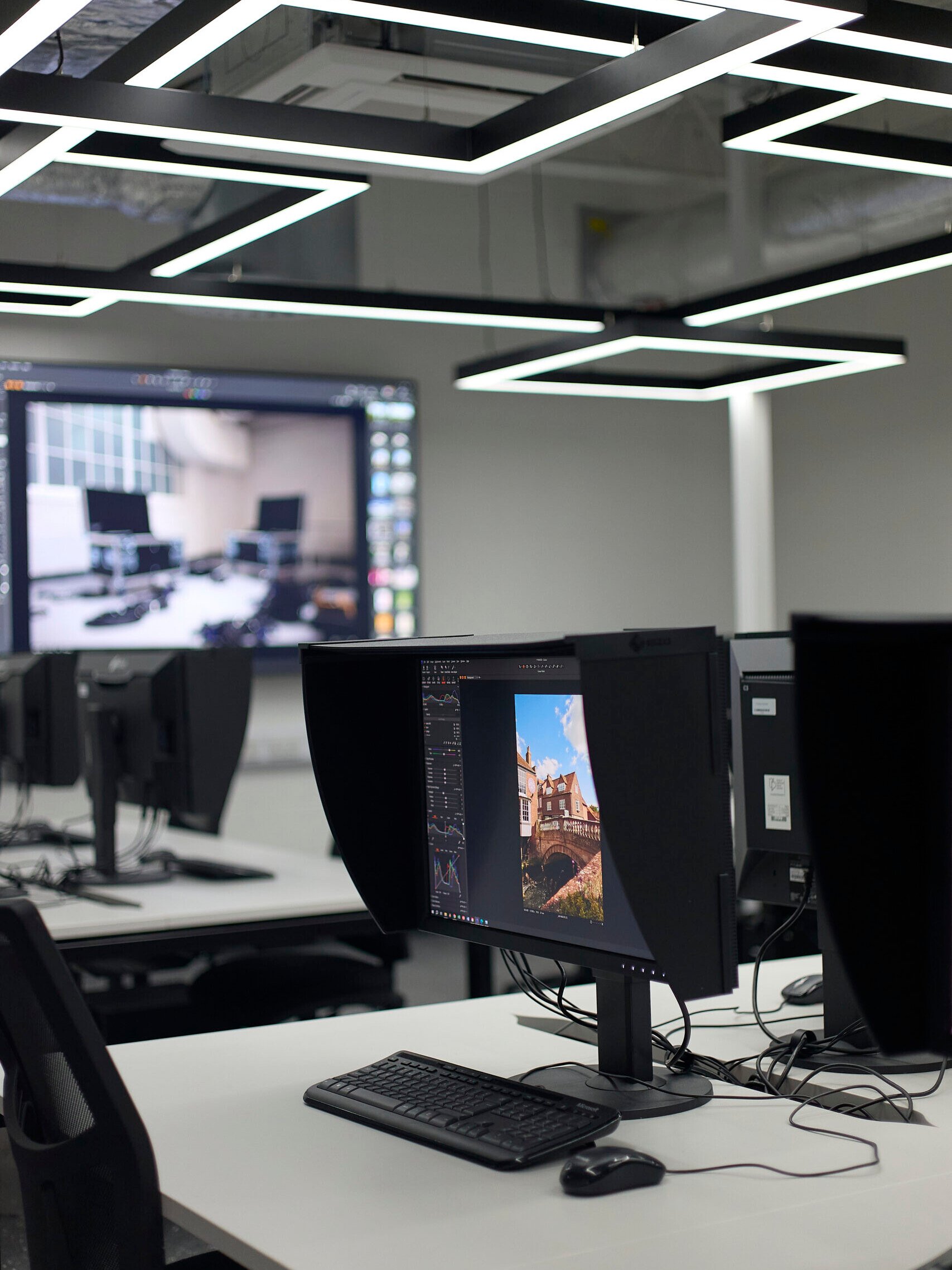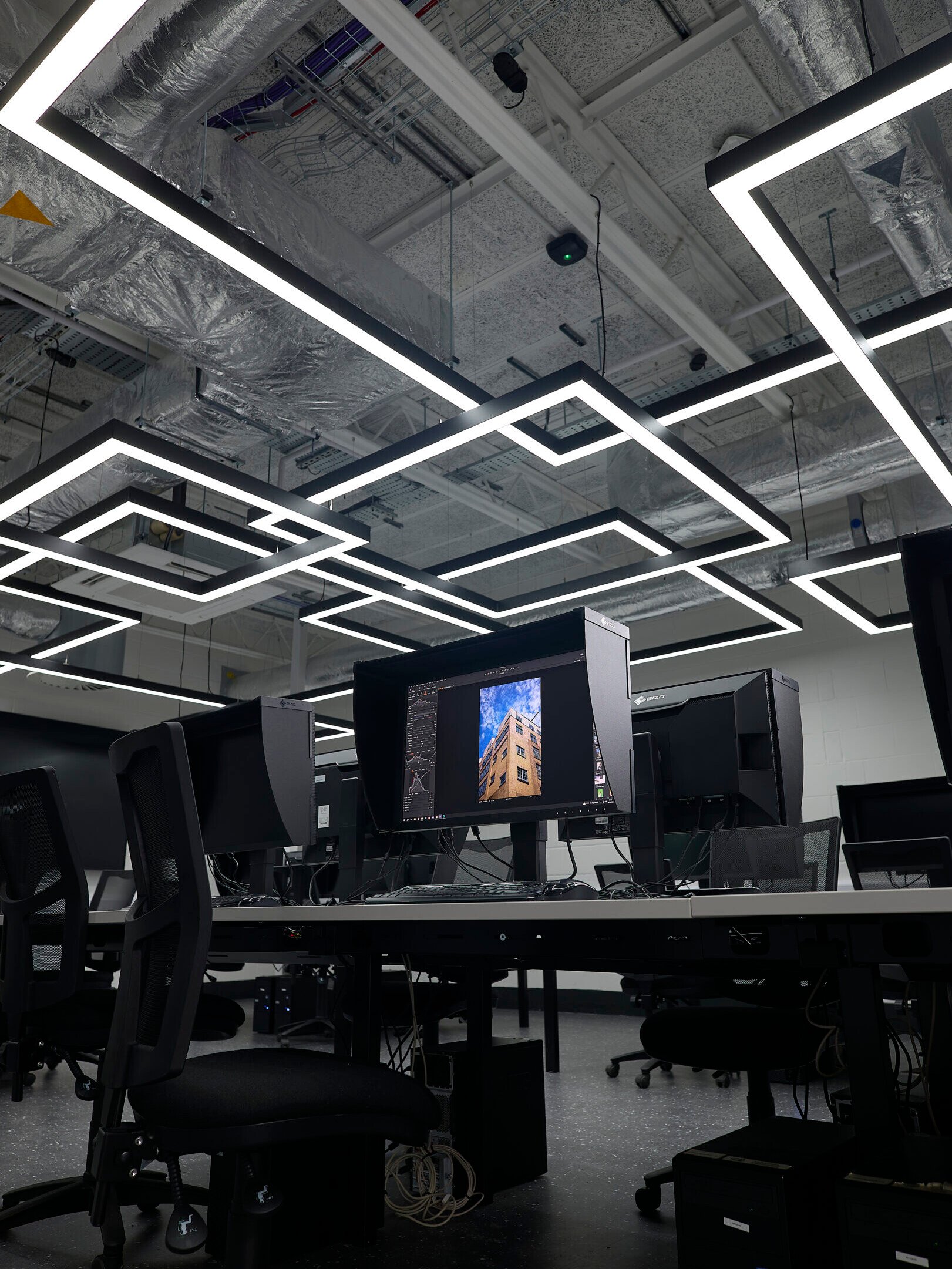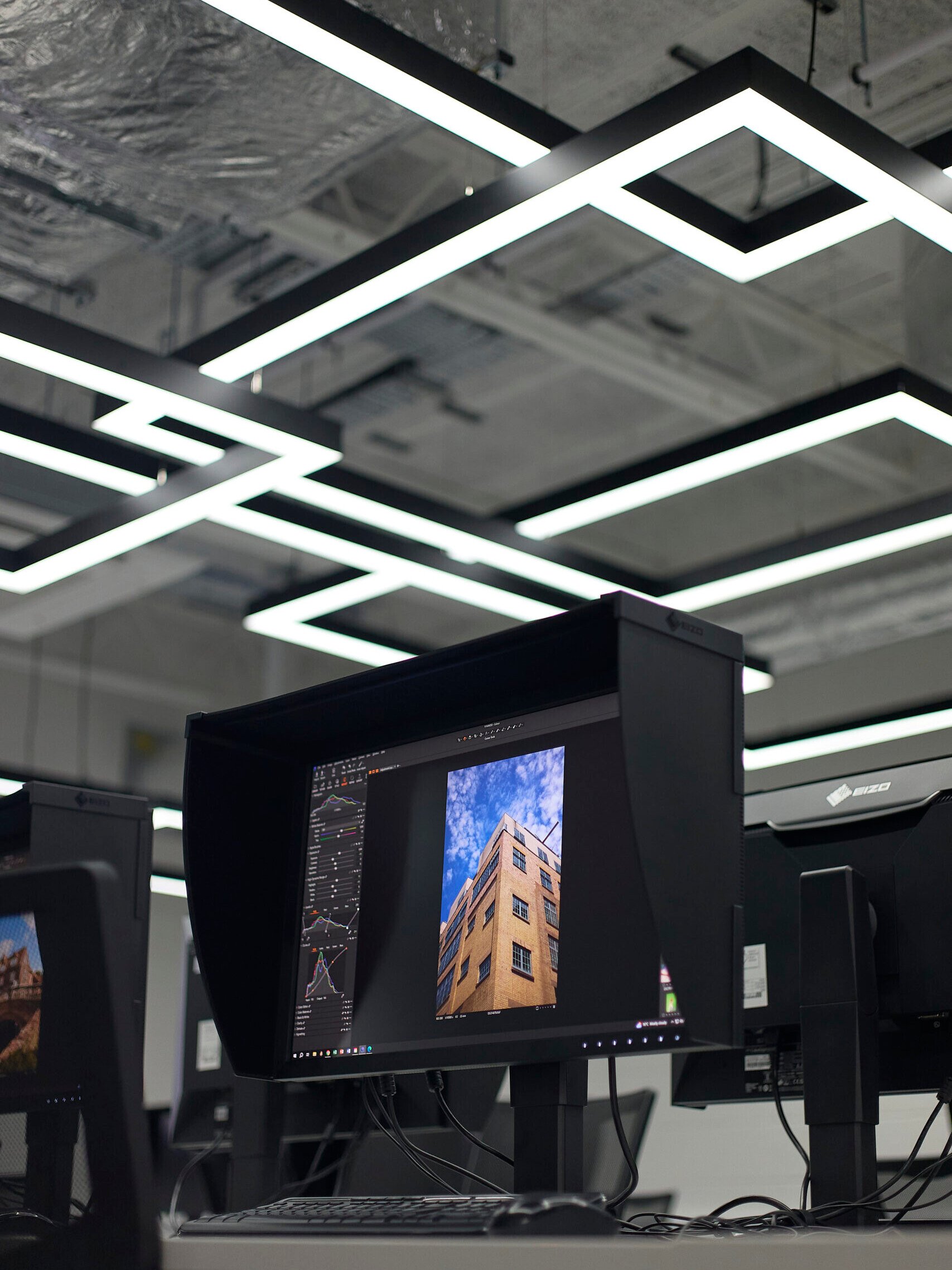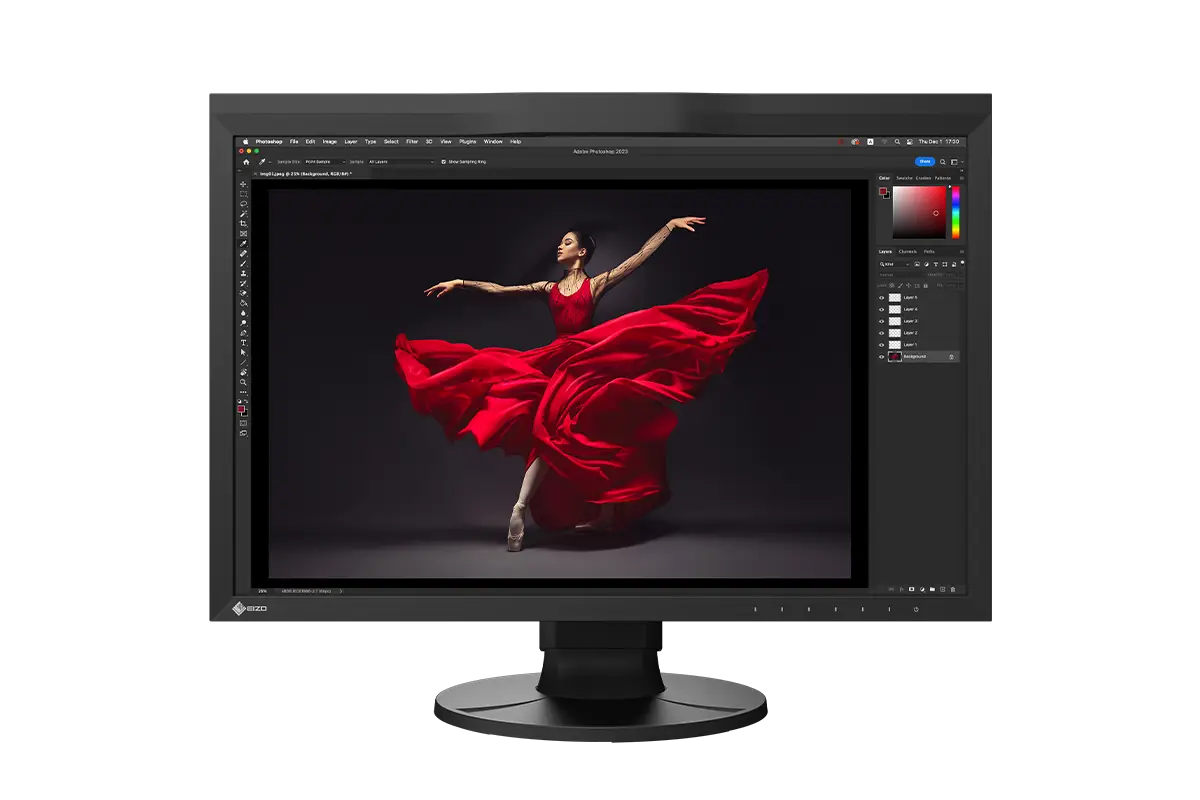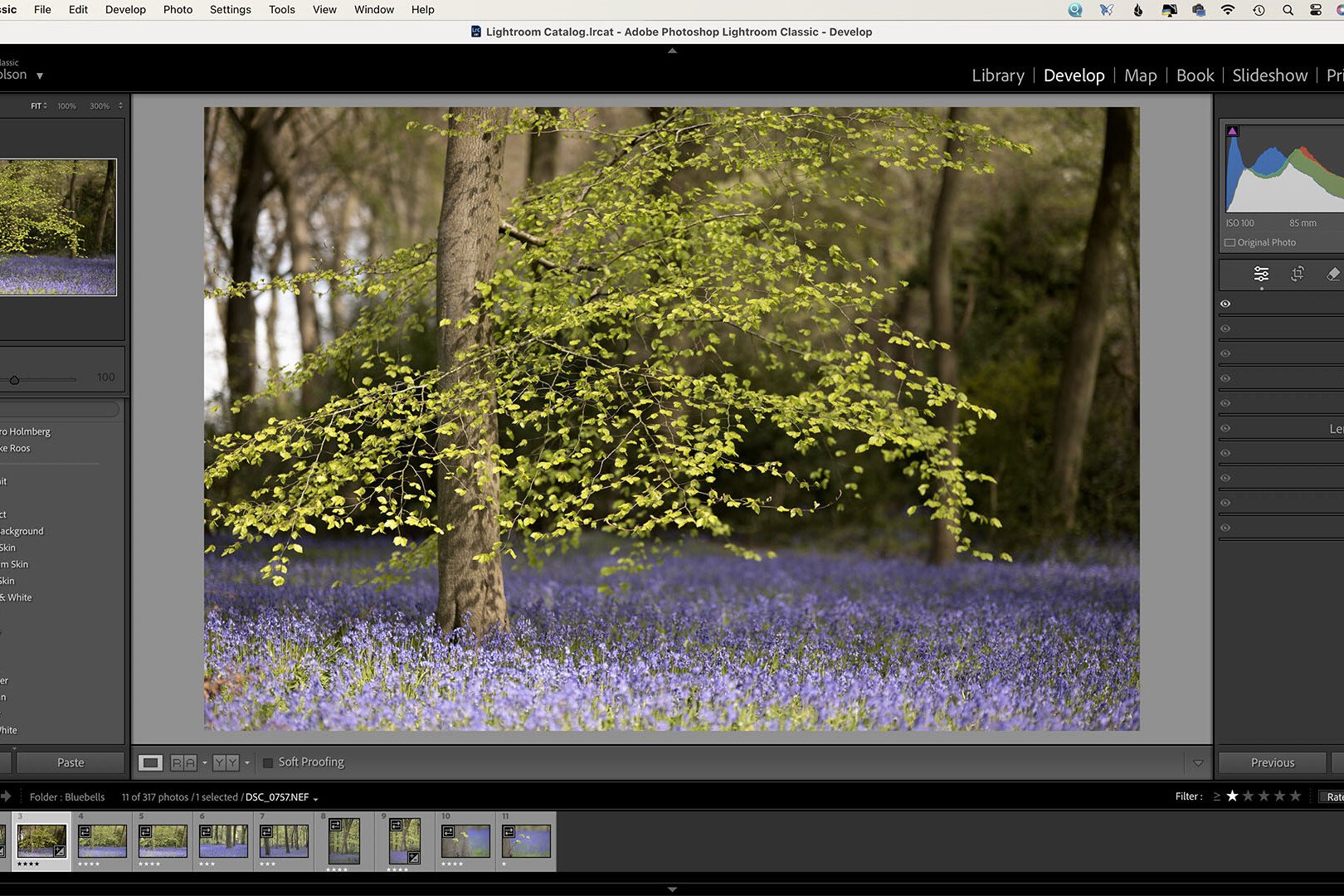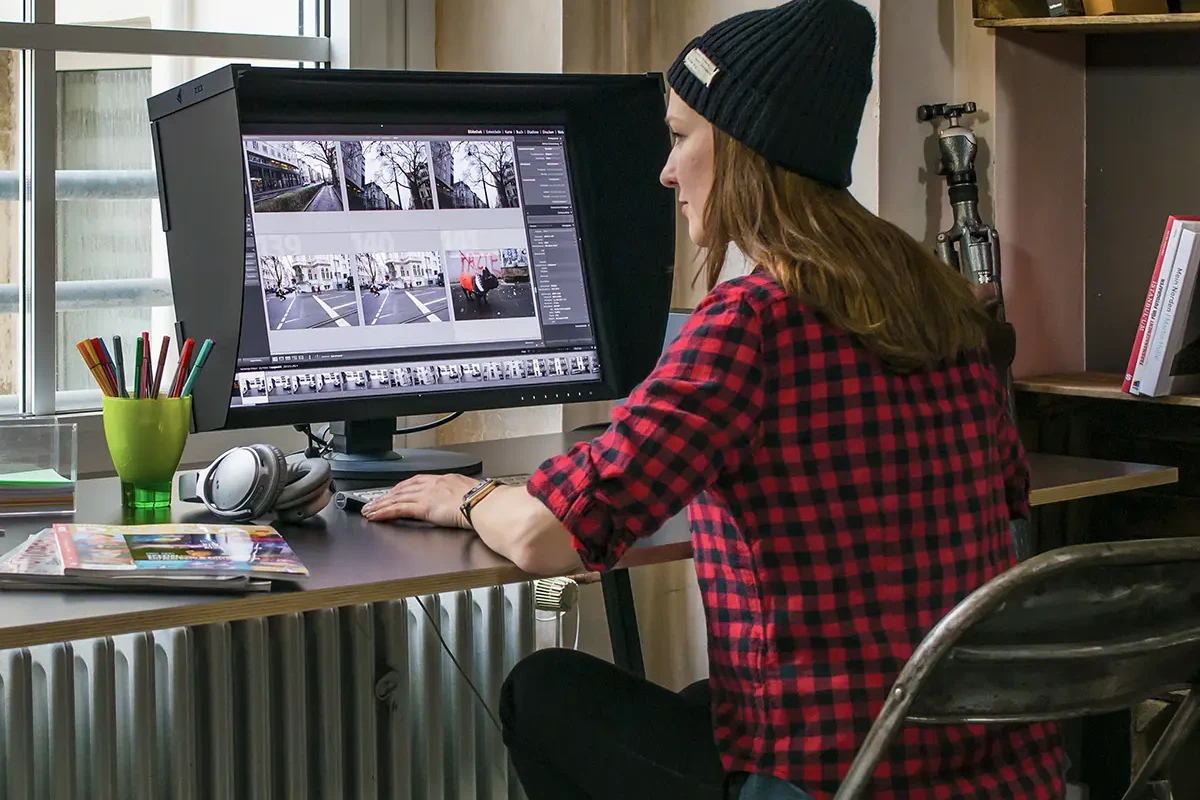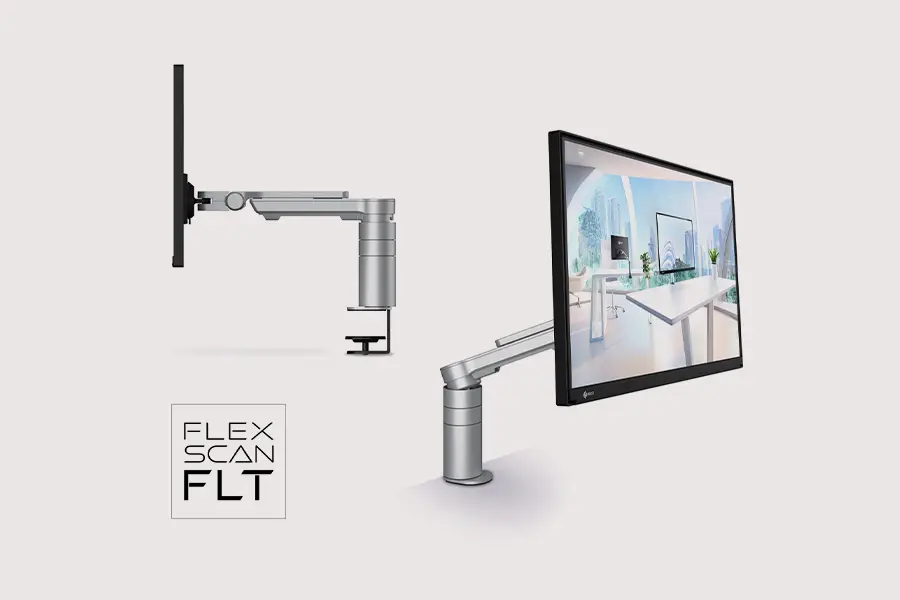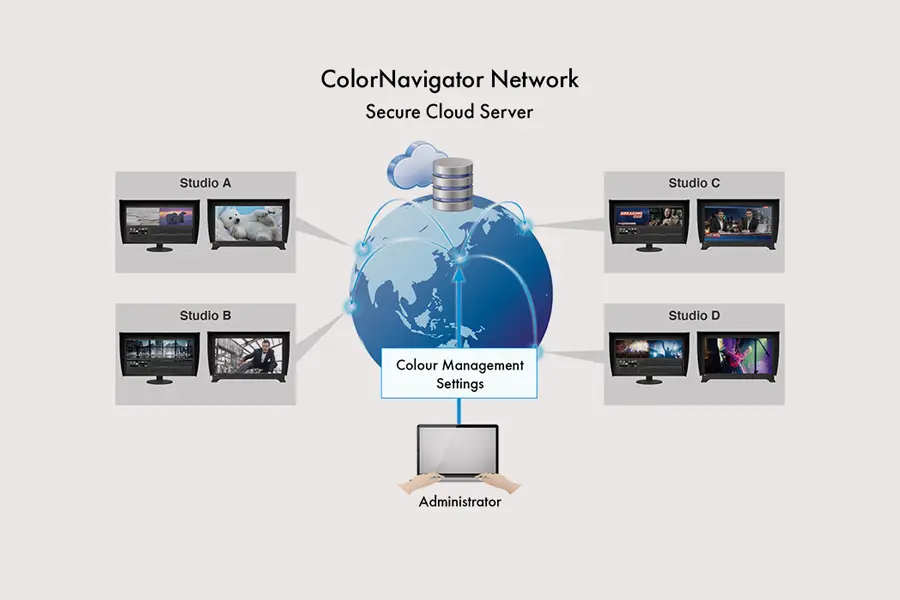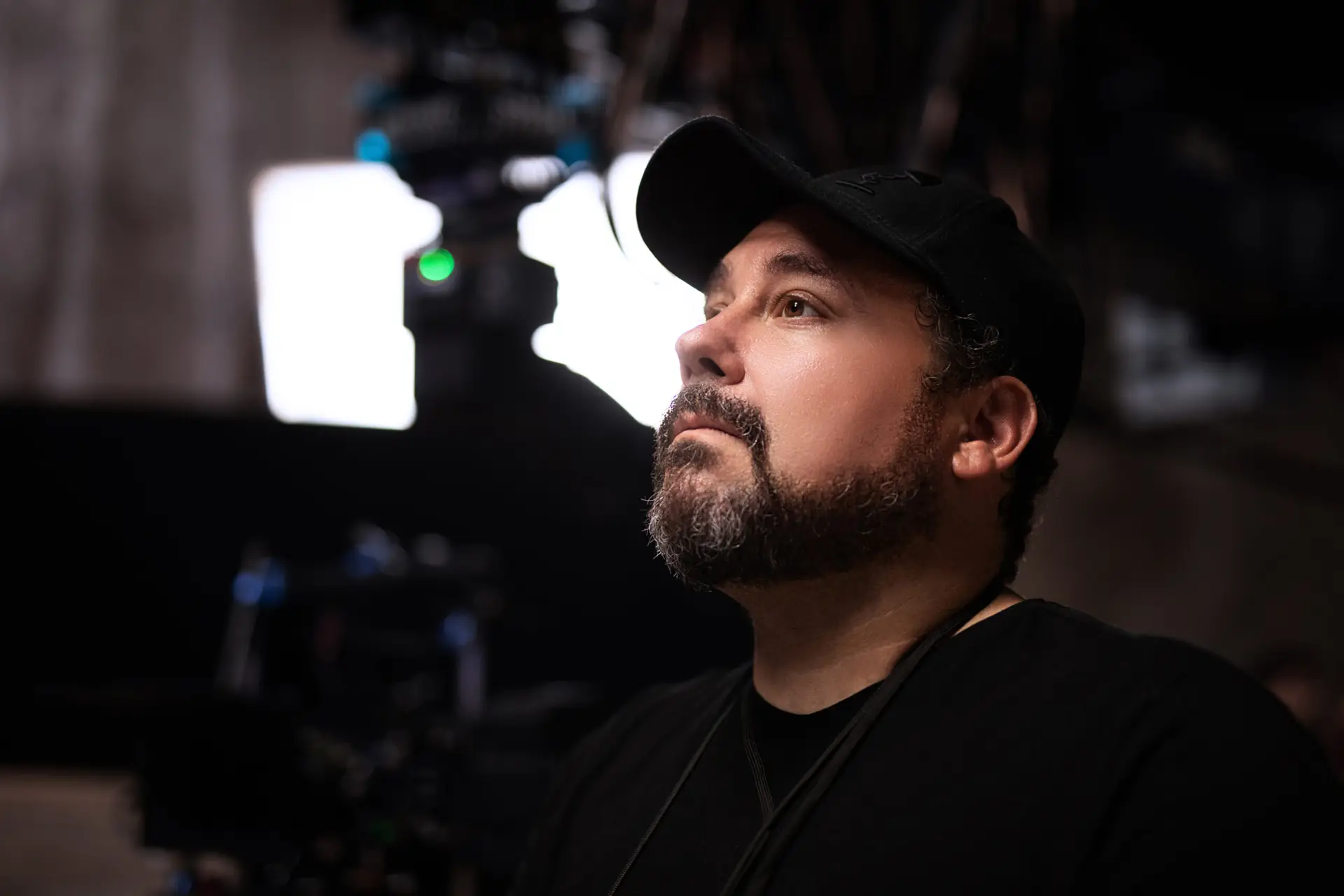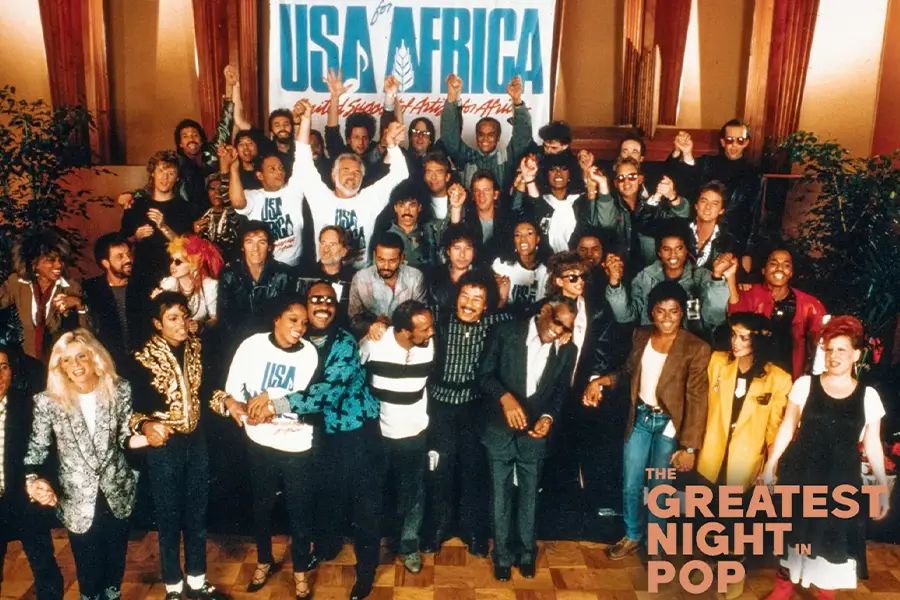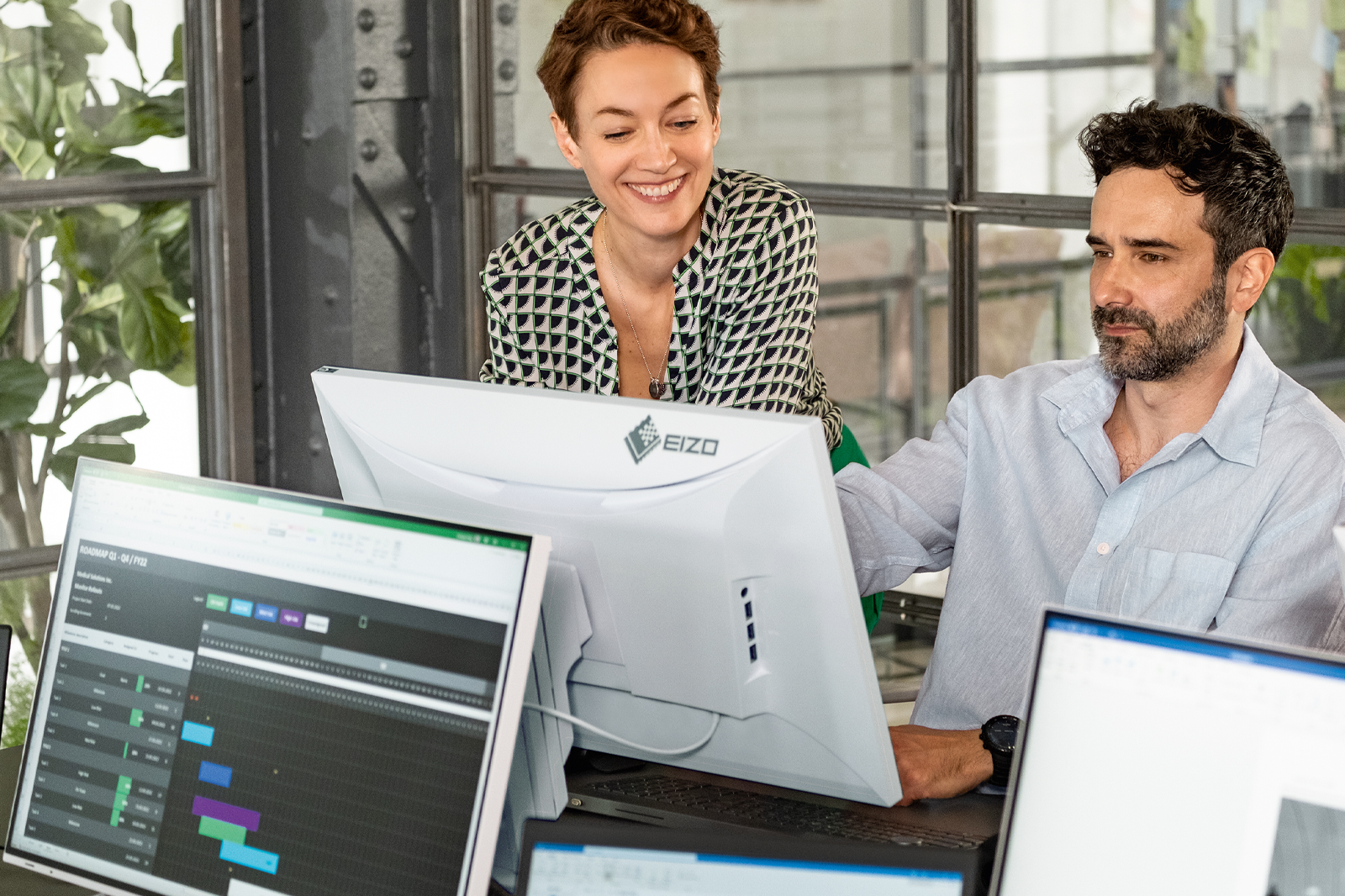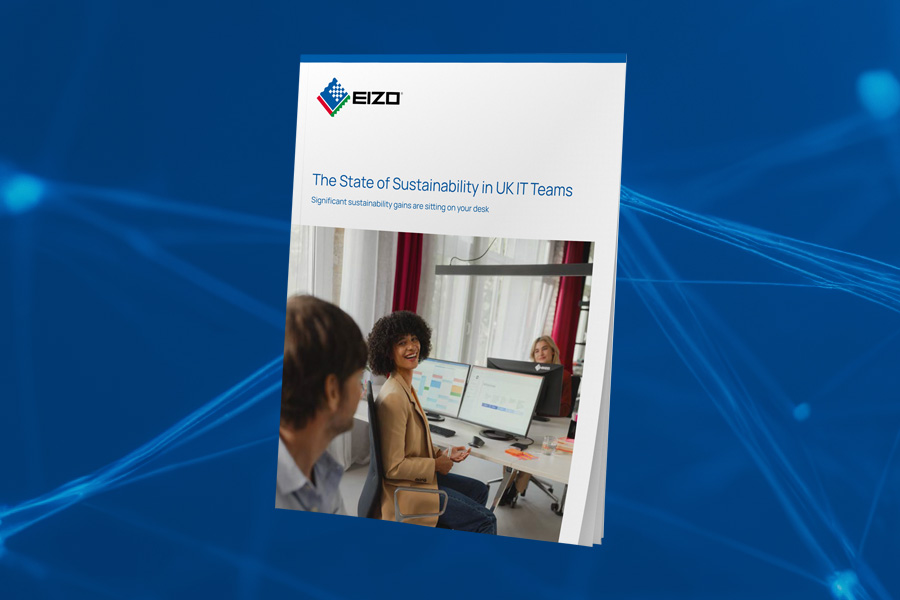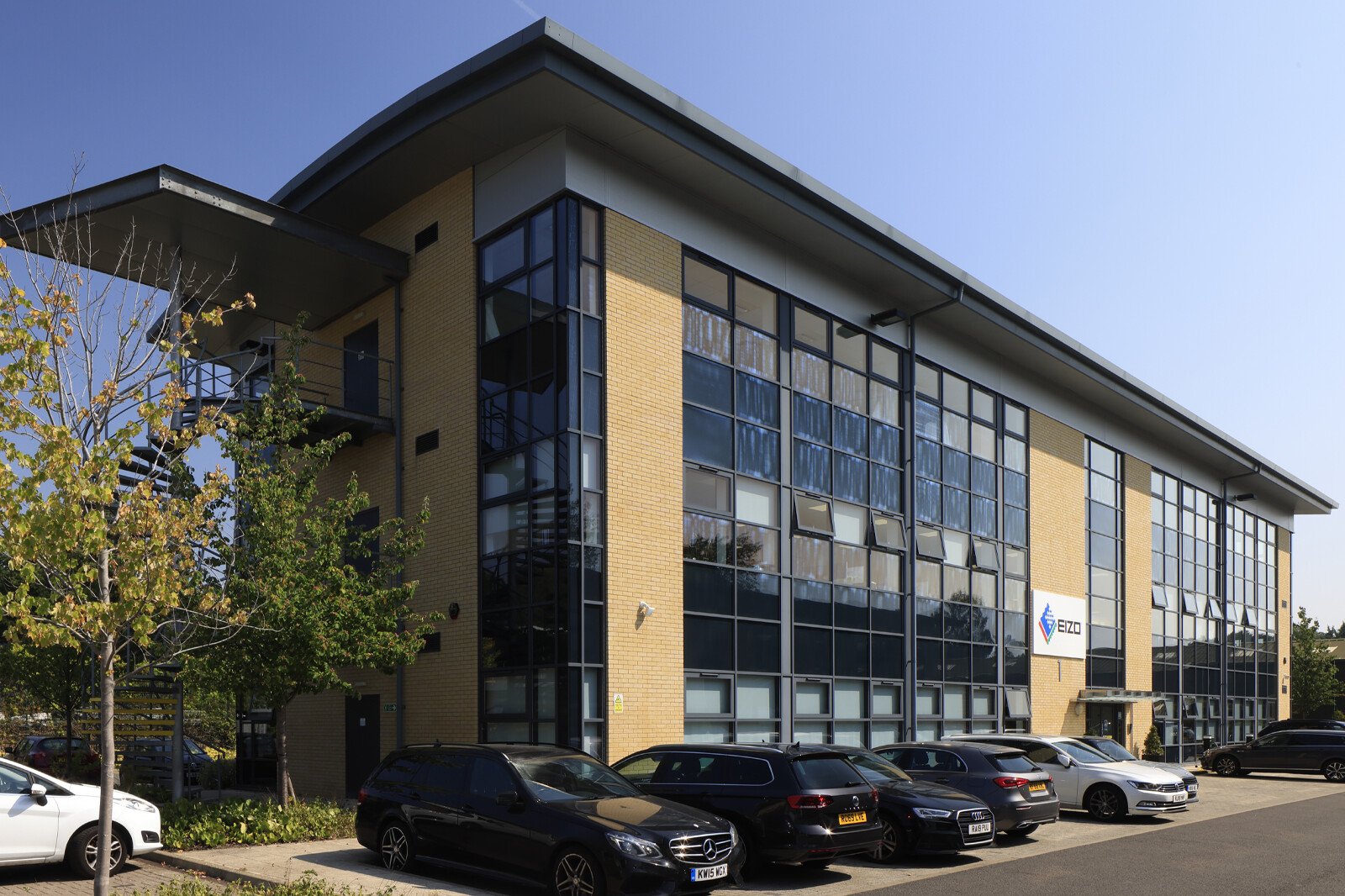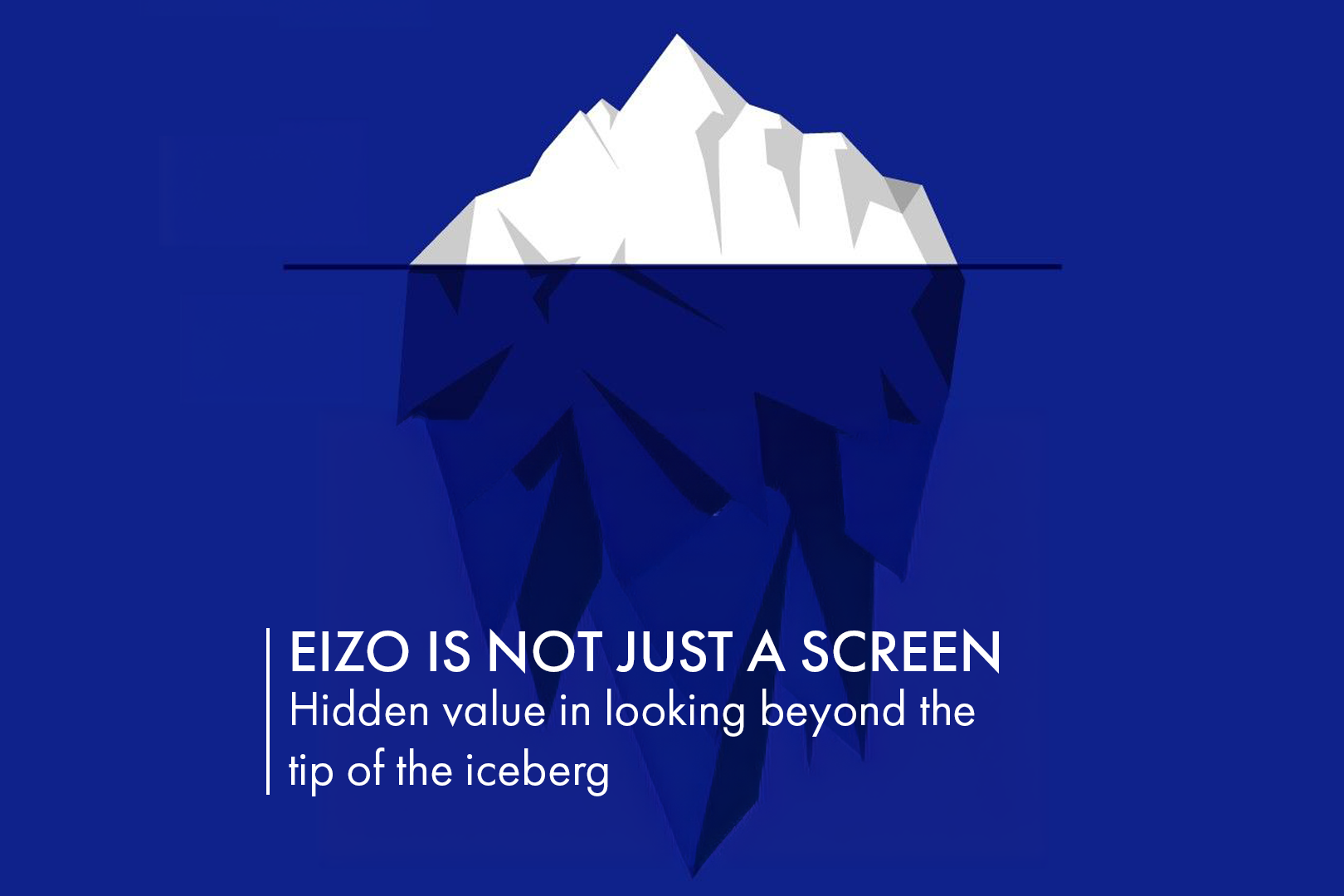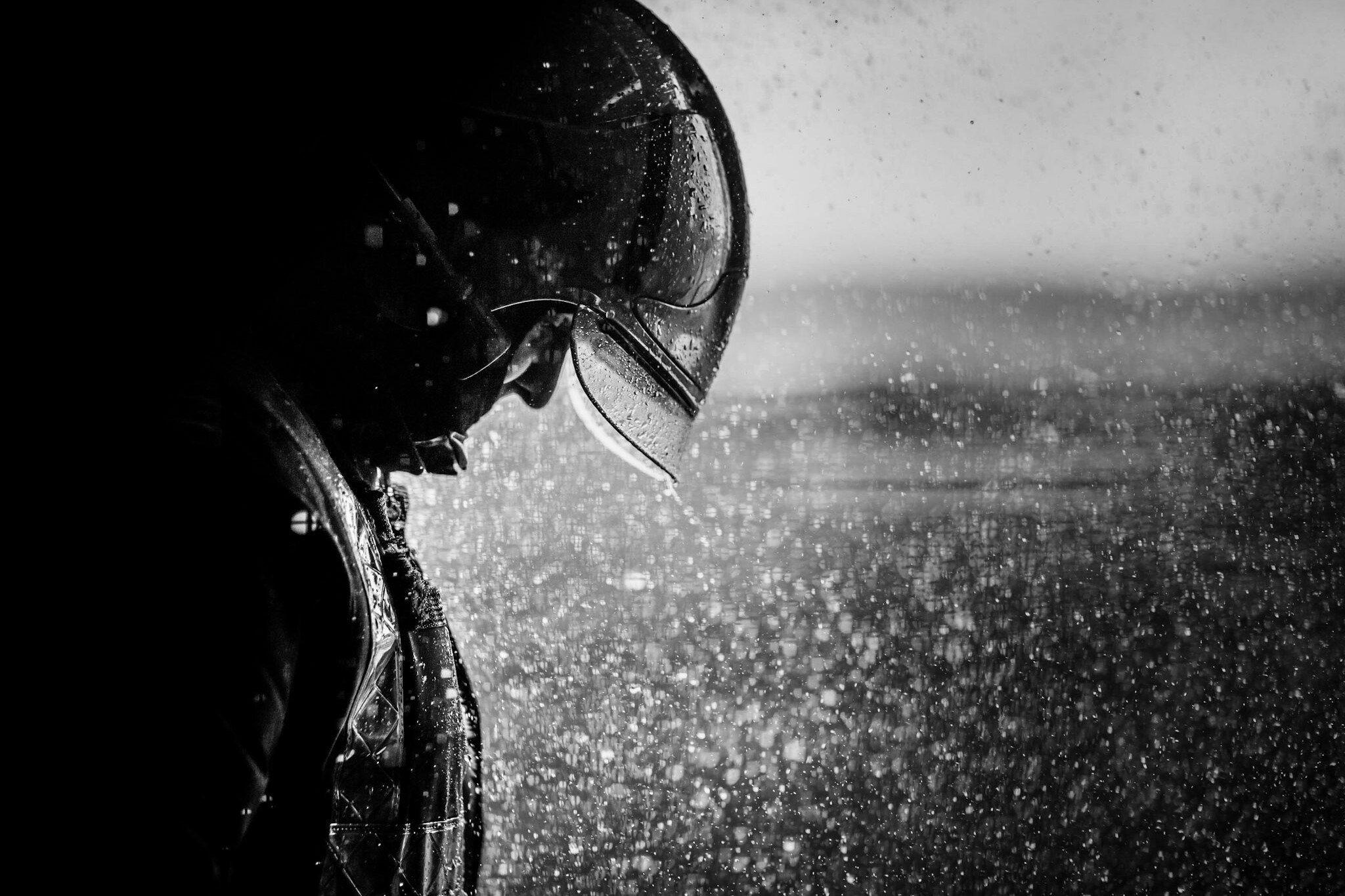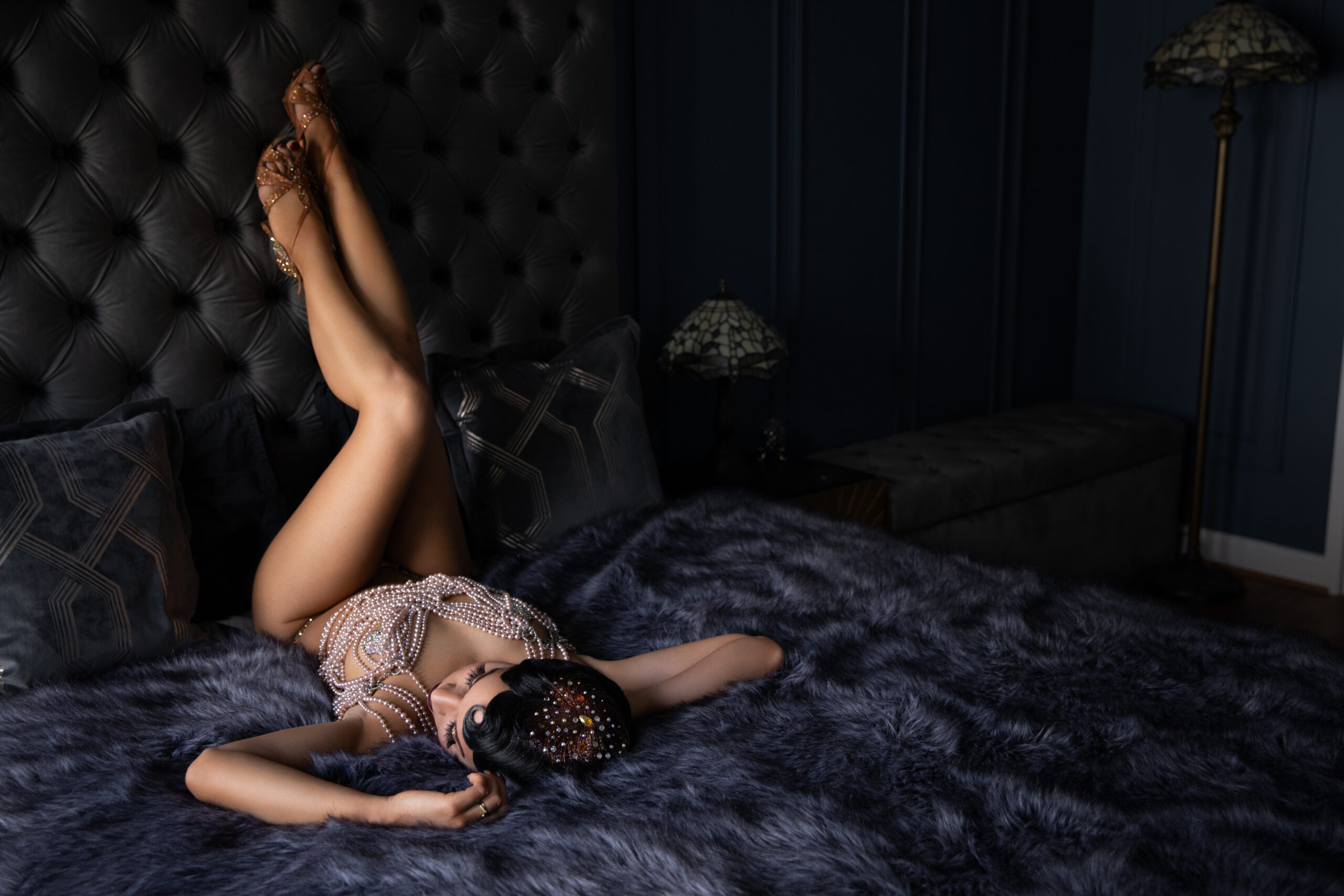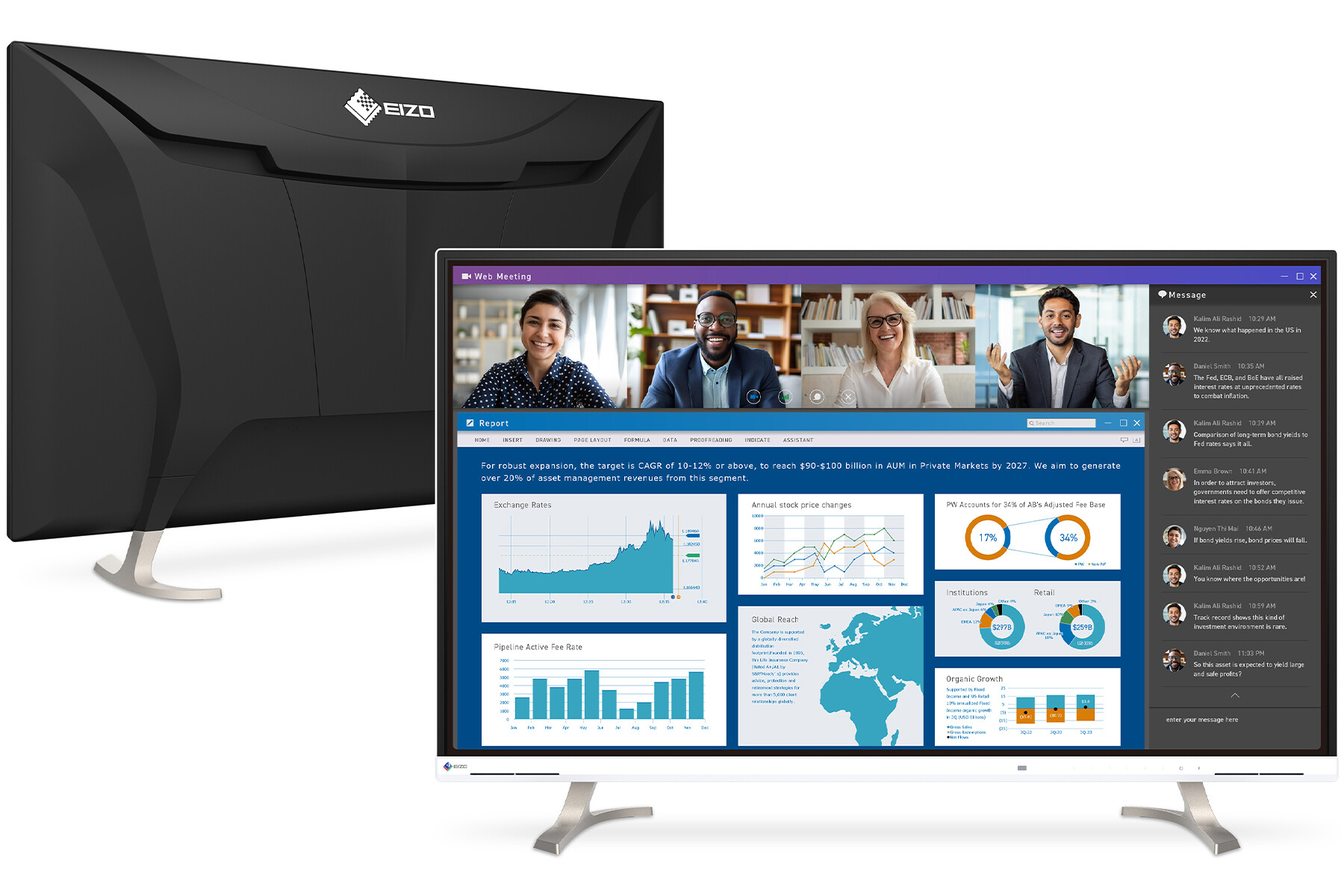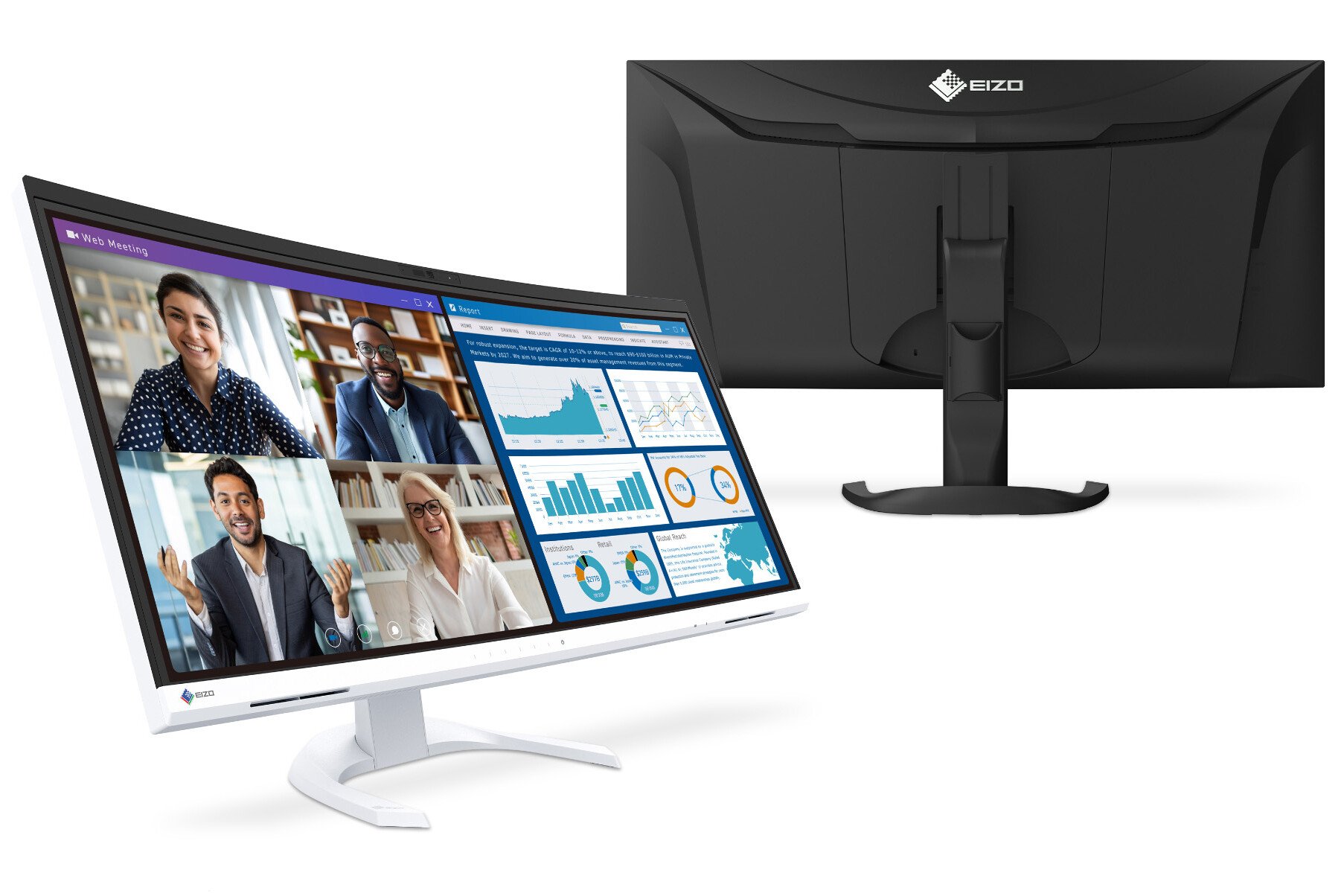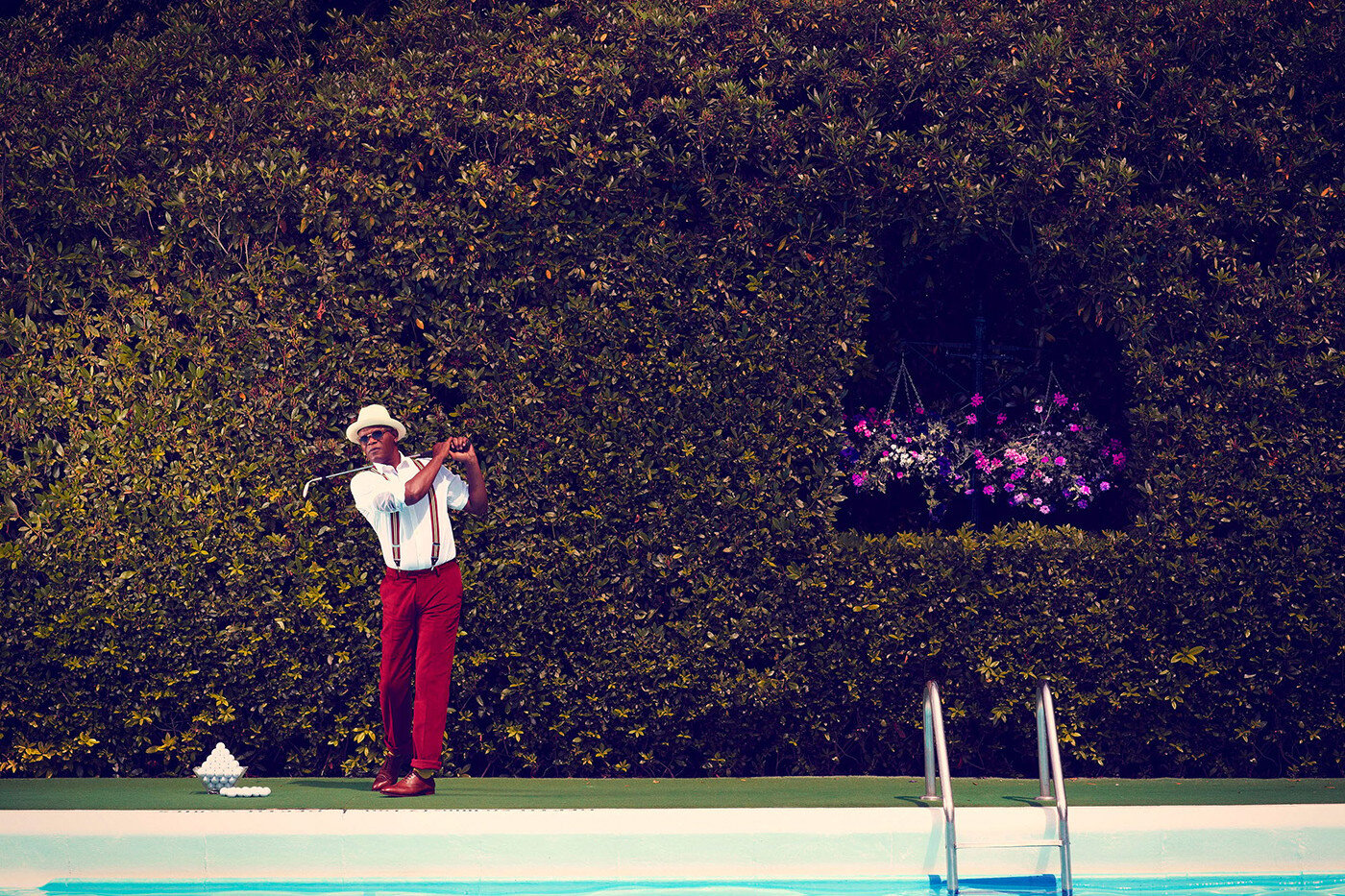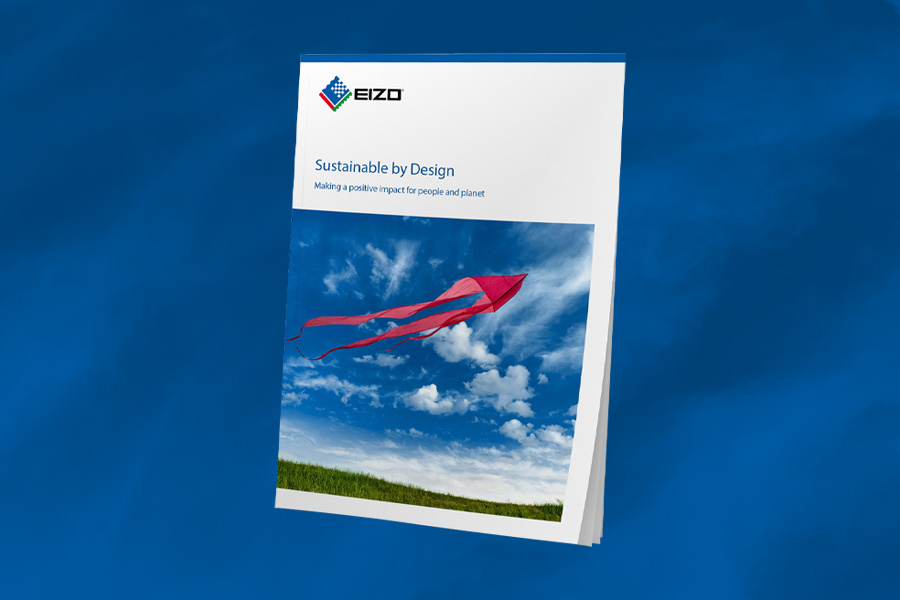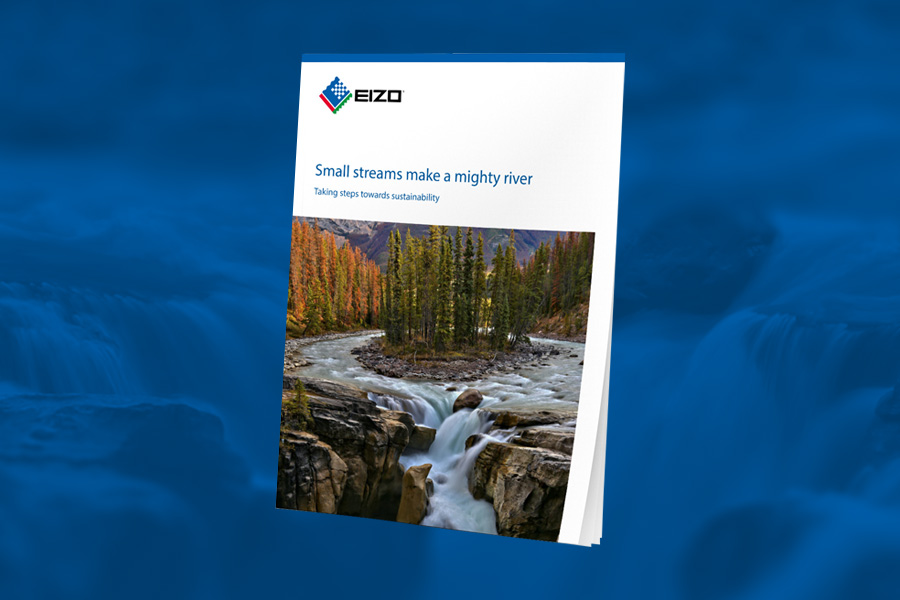Photo, Design and Media
University of Portsmouth Cultivates Future Creatives with EIZO Displays

University of Portsmouth is one of the leading creative universities within the UK, offering a range of creative courses to students at its Faculty of Creative Cultural Industries.
The courses often intertwine with each other, the photographers willingly bringing their skill and expertise to help other creative students capture their work. This inter-dependency is the basic requirements of the creative industries that many of these students will enter when they leave University. The inter-dependencies of the creative disciplines are similar to the inter-dependencies of hardware that make up the creative toolbox, a creative toolbox to which an EIZO monitor is the final stage of the creative process prior to output.
David Clark, Senior Specialist in Photography at Portsmouth provides an overview of the way EIZO monitors are deployed within the University and the benefits that they bring to the students and University. David explains “We’ve significantly reinvested in the department, a project that we’ve been planning for about five years and allowed us to consolidate all of our existing facilities. The (facilities) where the same layout as they were originally in the 1980s. So, if you imagine where photography was, it was very analogue and obviously it’s been transitioning across into this digital world, and that’s meant that the spaces have had to adapt at the same time.
We’ve been able to consolidate a lot of our spaces to cater towards what photography currently is and (might) expand in to in the future. It’s difficult to know what that’s going to be, but we put a lot of research into this, so I’m hopeful we’ve predicted this correctly. That move from analogue to digital has really taken place now, so the areas of change are going to be in, in the new areas such as CGI, VR, and AI. Our space can adapt to that, we’ve got 3 studios all with industry spec kit, replicating the same equipment that you’d find in commercial rental studios, production carts, C stands and all the kinds of grips and tools that you’d expect to use in those spaces.
Finally, we have our editing suite, that’s where we have our workstations, obviously all equipped with EIZO monitors. It is also a space we can deliver teaching. We revolve around a few pieces of software, the primary package is Capture One, a smaller amount of it is now Photoshop because things have progressed where RAW processing software can do a lot more than Photoshop for our students, and particularly when we’re trying to equip students with commercial knowledge and experience learning how to use these types of software, I think is what can really give students the edge.”
The University is trying to ensure that the students get practical knowledge that will enable them to be able to slip easily into a fully professional environment once they graduate, regardless of the style of studio from capture through to output as David continues “The idea is that we have a space where students are able to work in the studio to capture or create imagery, then they can go into an editing suite where they can start their post production for further editing.
Obviously, it starts off purely digital, capturing and then editing, but then it moves into printing, which is a whole different world. So, moving from digital into print is, I almost want to say traumatic, but it’s probably not quite the right word, but it can be tricky.”
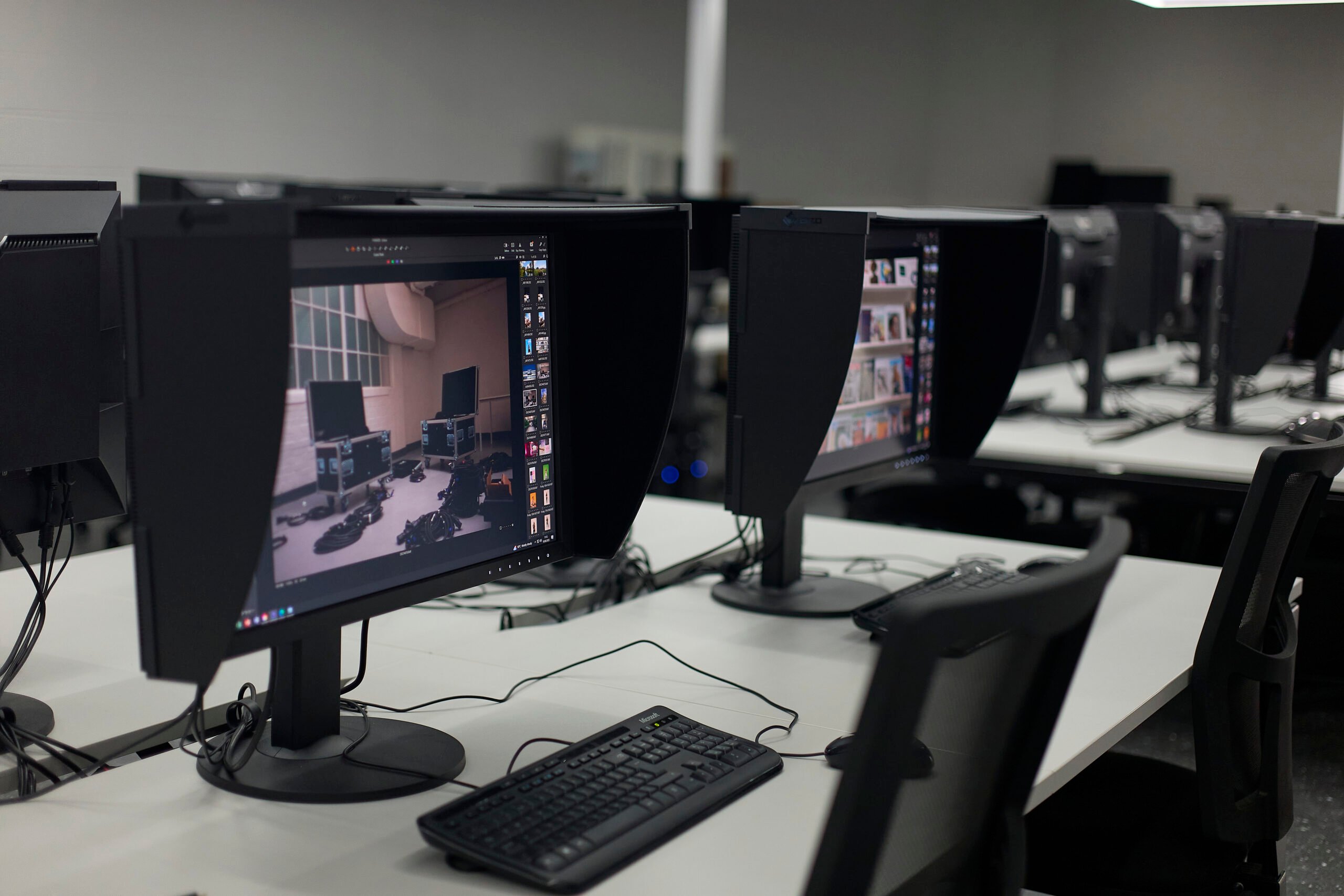
Everyone has access to a camera through their phone, which is an incredible entry point to the world of photography for so many, which is why more photos are uploaded online every single day. However, a phone camera does not have the same creative or technical capabilities as a dedicated camera, and the step to a dedicated camera is quite often the biggest barrier to entry into photography, some photographic courses in the UK have certain pre-requisites including equipment ownership and portfolio submission, which can extend the barrier to entry for specific courses for some students. Portsmouth have taken a specific direction to try and ensure that they course is open to as many students as possible as David outlines, “There’s no prerequisite for students to bring any of their own equipment.
We offer a comprehensive loan store, with an online system where students can log in and book their equipment. Once they’ve been trained, they’re access starts to increase. We’ve got predominantly Canon cameras. We try our best to not prescribe that everyone should shoot on Canon or Nikon, we want to give everyone the chance to try out everything. We recently invested in some new Canon mirrorless, and we also have Nikon and Fuji including some of the Fuji GFX digital medium format which is fantastic. Our range of digital (equipment) is quite broad.
Adding on to that, we’ve got all of our traditional cameras, we’ve got a range of different Hasselblad, Mamiya, Nikon, Canon film cameras and large format cameras. There’s quite a lot of kit, and that’s also where students can look out different lenses, location lighting kits. And all of the kind of tools that go with it.”
Once the students have arrived the team at Portsmouth are well set up to try and bring students up to the same level as quickly as possible, but with the realisation that every student will have an individual way of looking at things, as David outlines “We don’t run workshops where we’re just talking purely about the technical side, but I think it would become quite boring. We find it’s much better to integrate it, when students are in their first year, we run modules that focuses on creative and industry skills that revolves around camera skills, studio lighting, location lighting and dealing with editing and printing. that comes with that. Rather than just being a dry workshop, talking about apertures and ISO, we would explain it, but then provide a little more context and put it into practise working in the studio or out on location. Quickly you realise how those adjustments impact your shot. I find that’s a much better way of learning because it’s pretty hands on and creative. The students benefit so much more if they can actually do it themselves and then learn through their own approach.”

As so many professional photographers will tell you, being the actual photographer is only ever part of the picture. As many photographers are freelancers rather than being employees managing or at least understanding the potential pitfalls of being a professional within the space. David explains how Portsmouth helps prepare their students for professional life, beyond the technical aspect of taking the photo, “We run a module that’s based on professional practices and work experience. That covers things like risk assessments, insurance, model releases, image licencing, probably even going down into the smaller details of how to charge and what sort of realistic fees should you expect. (The fee) could be based on the time, the equipment being used and your level of skill.”
The non-photographic elements of being a photographer are as important as the ability to be able to take the photographs, David explains how he would split the importance of the different skill sets in successful photographers, “I’d say about 50% of it is the technical skills and knowing your industry and the other 50% is dealing with the public and your clients. Even, if you’re the best photographer in the world, if you don’t know how to deal with people or market yourself, then it’s always going to be a little bit of a struggle, photography by its nature, you’re going to be dealing with people a lot of the time and working out how to get the most out of a situation through your soft skills, that’s really, really useful.
I think probably one of the keywords is communication, a lot of photography boils down to communication. You’re communicating a brief and translating it into photographic images. You’re telling a story and creating a narrative. Sometimes it has to be very technical and precise, other times it has to be a lot more fluid and dynamic, and unpredictable with its creative approach. The best photographers are probably the ones that can adjust from one to another based on the assignment, the client they’re working with on that day.” Those soft skills and the business skills should not be under estimated as a key part of photographers toolbox, just as the wide range of equipment that a photographer requires makes up their creative toolbox.
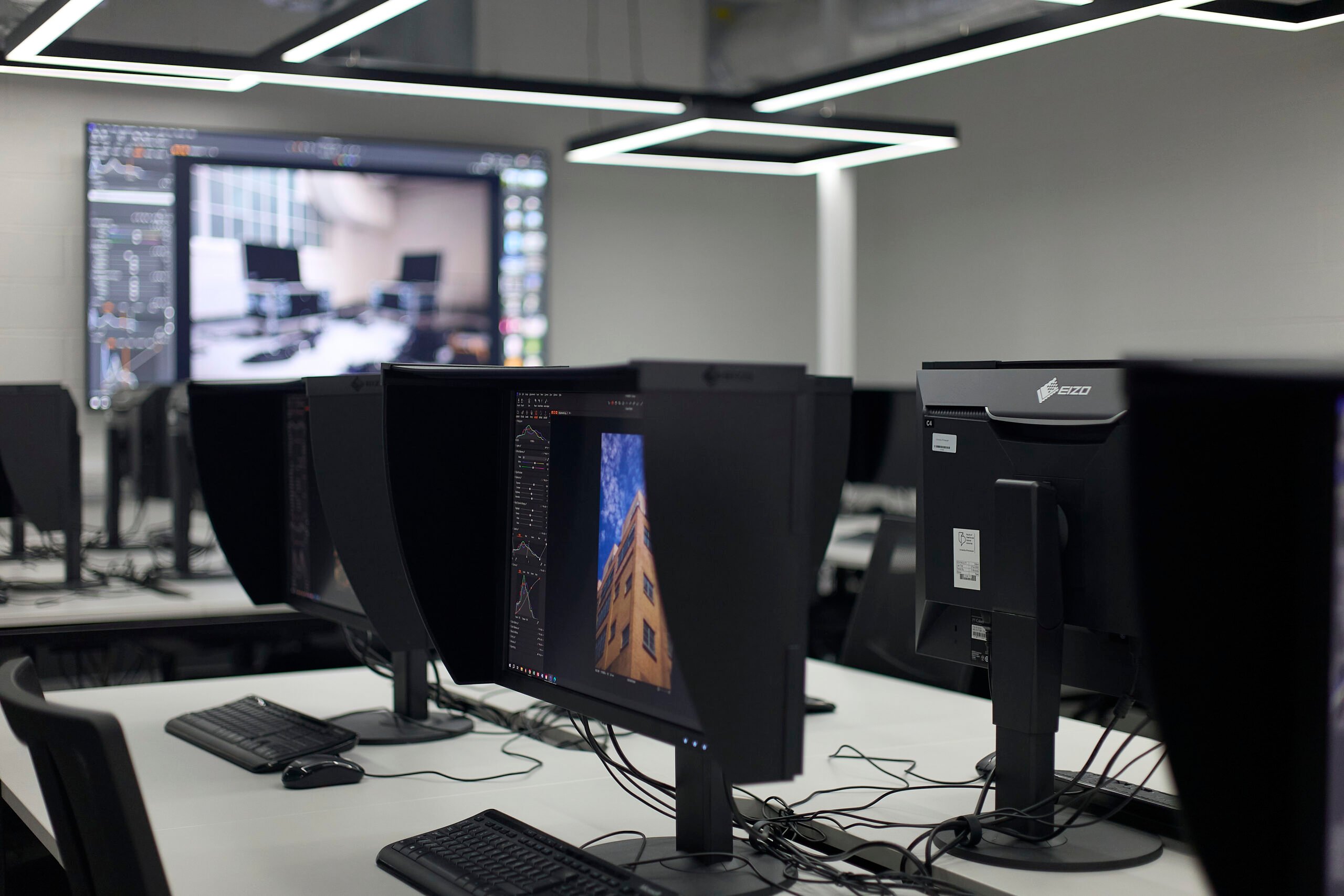
David and the team at Portsmouth have invested in their own creative toolbox and have a clear plan about how they want to help their students take their first steps into the world of professional photography. They have chosen EIZO as their sole provider of monitors, which include a fully equipped editing suite with ColorEdge CS2731 monitors, amongst others and a deployment of ColorNavigator. David details the reasons why the faculty chose EIZO, “I’ve been working with EIZO monitors over the past decade, their set-up, interface, connectivity, functionality and consistency allows us to integrate that into our modules. We would go through showing students how to calibrate the monitor, giving them that experience of setting up an EIZO and key things to look for. So that’s screen brightness, colour space and even illumination in the space that you’re working in. These transfer so easily if a student was doing work experience, as it is what we expect students to see if they’re working on set, proving that we’re committed to the professional development and equipping our students. The strange way that works is that we wouldn’t really see the direct benefit until they’ve left. So, we’d only ever hear anecdotally that this is working.
I think beyond that, it’s looking at what we want to do, and we want to make informed decisions on the equipment we buy and the facilities that we provide to our students. One of the key indicators is looking at rental companies, if you were to look at any rental company in London, they would have a digi-tech section which contains hardware that we have within our facilities and equipment pool which gives us the confidence that we are able to provide our students with the same equipment that they’d be working if they start assisting or shooting their own campaigns, working commercially in the future.
I’m a really big fan that we’re able to control the settings, we have ColorNavigator Network set up because we’ve got machines in different spaces, now we’re able to see that we have a fully colour managed editing suite. So, we can see quite clearly if there’s a mismatch with colours. A well colour managed system, points the finger elsewhere. Previously we were having issues, it could well have been our original monitors. Now if you see something you don’t like the look of, if there’s some colours that don’t look quite correct you’ve got that confidence that it probably isn’t correct, or similarly, if everything looks good, you know it’s probably going to be good when you move into post production and when you’re printing.
We had some of our photography students working with the fashion students. They’ve all made designs and garments. So, we’re getting them photographed by our students in the studios and for some of the items the colours weren’t quite looking correct and that’s because certain dyes and prints react differently under different lighting. So, we were collaborating with the designers in the space, and we were able to make colour adjustments directly with the designer at the time (of the shoot).”
This collaborative approach that David utilises helps reinforce the benefits of photography to the fashion students, because they are able to see in real-time the importance of lighting, colour management and photography when it comes to show their work off in the best possible way, making them another group of evangelists for the photographers they will work with in the future.
University of Portsmouth have chosen to invest in their creative courses, to be able to give their students as close to a professional set-up, as is possible in an academic environment. EIZO is proud to be able to support the next generation of creative professionals as they enter the industry.
Best Photo Editing Software in 2025
Discover the best photo editing software for your photography style – from Photoshop and Lightroom to Capture One, Affinity, DxO and Luminar Neo.
Why monitor calibration matters
Monitor calibration is essential for photographers, videographers and content creators who want accurate colour and brightness from screen to print or online.
EIZO Interviews Ellie Rothnie – Wildlife Photographer and Canon Ambassador
Award-winning photographer, Canon Ambassador and EIZO User Ellie Rothnie, talks about her journey as a professional photographer and top tips from her journey.
EIZO FlexScan FLT Product Showcase
Discover EIZO’s Most Energy-Efficient Monitor with World-First Class A European Energy Label.
EIZO ColorNavigator Network: Solving the Colour Managed Workflow
Unlock the full potential of your EIZO monitor with our comprehensive setup guide for the EIZO ColorNavigator Network.
EIZO Interviews Victor Perez Part 2
Victor Perez’s career is probably the most literal example of rising from the rubble of his home in Italy to working on award winning films in London.
EIZO Interviews Victor Perez
Victor Perez is a visual effects supervisor who has worked on many blockbuster movies including Harry Potter, The Dark Knight and Star Wars.
EIZO Interviews Fifty Fifty Post Production
In conversation with Elliot Riella from Fifty Fifty Post Production about his love of EIZO and how they perfectly fit into his Autodesk Flame workflow.
EIZO FlexScan: The Best Monitors for Office Work Environments
Investing in the best monitors for office work means more than choosing a desktop monitor. It means long-term savings, improved continuity, productivity, and well-being for your organisation.
The State of Sustainability in UK IT Teams
Sustainability is front-of-mind for most of the public with 70% of people wanting to see businesses take more action on climate change.
EIZO Monitors: A Legacy of Innovation, Quality and Sustainability
Choose an EIZO monitor and do not just settle for the basic screen that normally comes as standard with the computer.
Why should I choose an EIZO monitor?
If your organisation values quality, longevity, and sustainability, you should choose an EIZO monitor.
EIZO Interviews Clive Booth
Clive Booth is a commercial photographer who has worked for many iconic luxury brands, he has photographed celebrities and shot films around the world.
EIZO Interviews Tigz Rice
Long-term EIZO user Tigz Rice, who has established herself as one of the leading empowerment photographers with an incredibly successful career shooting
EIZO ColorEdge PROMINENCE CG1 Product Showcase
EIZO releases 30.5-inch ColorEdge PROMINENCE CG1 true reference monitor with built-in calibration and advanced interfaces for efficient creation workflows.
EIZO FlexScan EV4340X Product Showcase
Discover EIZO's largest FlexScan EV4340X monitor with built-in USB Type-C dock for business professionals.
EIZO FlexScan EV3450XC Product Showcase
EIZO Unveils Its First Ultrawide, Curved Monitor with Built-In Webcam, Microphone, and USB Type-C Dock for Business Professionals.
EIZO Interviews Hamish Brown
Never heard of Hamish Brown? Well, that is probably not a surprise as it is not unusual for photographers work to be the cover image of the album or the front page of the book or magazine. If you have heard of Robbie Williams or Anthony Joshua and seen a picture of either of these British Icons, then it is more than likely that you would have seen some of Hamish’s work, but it is probably still one of the best photographers of which you have never heard.
Sustainable by Design
At EIZO believe that we have a duty to do what we can to ensure the future of our planet, so everything we do is ‘Sustainable by Design’.
Small Streams Make a Mighty River
Sustainability is becoming more important to individuals and companies alike, and if we all take a few small steps, we can all move towards a more sustainable future.
